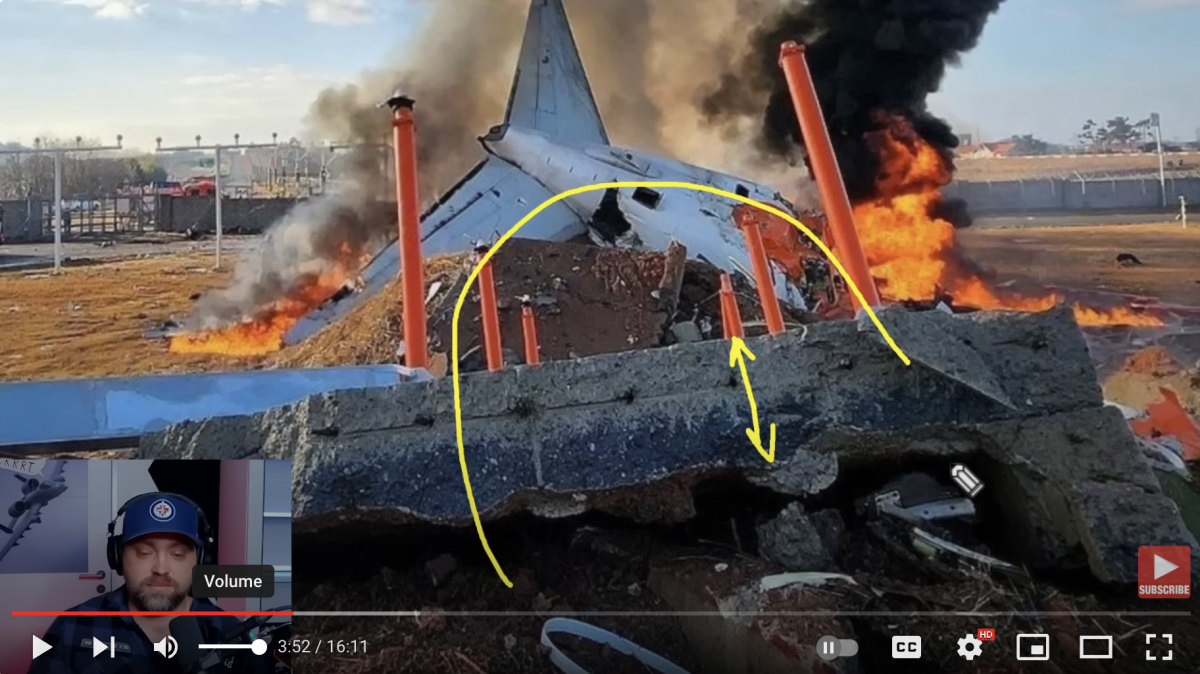-
Posts
36,553 -
Joined
-
Last visited
-
Days Won
34
Content Type
Events
Forums
Downloads
Quizzes
Gallery
Blogs
Everything posted by richard_smith237
-

Looming Crisis: Private Schools Face Closures Amid VAT Hike
richard_smith237 replied to Social Media's topic in World News
Incorrect - in Belgium: Primary Education: Approximately 54.18% of students were enrolled in private primary schools as of 2019. Secondary Education: In 2022, about 59.21% of students attended private secondary schools. Regarding General Population Demographics (info is a snapshot from once city). - Belgian Nationals with Belgian Background: Approximately 48.48% - Belgian Nationals with Foreign Background: About 34.76% - Non-Belgian Residents: Around 15.88% As your comment suggest - this aligns with your comment that a significant proportion of non-Belgians are in Private Schools. However, your point is a moot distraction - Tax is not applied to the private schools. Using the Belgium example: Commercial Education Providers are: - Private tutoring companies - Online learning platforms offering subscription-based or paid courses (e.g., for coding, business skills, etc.) - Institutes providing specialised training (culinary schools, driving schools, or IT certification programs) - For-profit international schools Not 'Private Schools'... ----- Regarding, Germany and Poland, they are being used as 'test cases' as they deviate from EU VAT rules by applying exemptions for private education providers too broadly. They extend exemptions to for-profit, commercial entities and activities not strictly defined as public-interest education under the EU VAT Directive. Again, this is about 'commercial providers' (similar to those listed above) and not specifically Private Schools themselves. -
The capability of the 737-800 to fly on one engine is a regulatory requirement for twin-engine aircraft under the ETOPS (Extended-range Twin-engine Operational Performance Standards) certification. Thus: If this were not dual engine failure, would the aircraft would have been able to continue flying while assessing the status of the air-craft ??? The Flaps are controlled by 'hydraulic system B' The landing gear is controlled by 'hydraulic system A' Both systems would have had to encounter dual catastrophic failure at the same time for both the flaps and the landing gear not to function.
-
The video is excellent and highly informative... What I have read, is that the switchover to the electric-driven pumps is effectively instantaneous if the electric pumps are already activated. If the electric-motor hydraulic pumps were not already turned on, the pilots must manually activate them using switches in the cockpit. This process takes only a few seconds, as the pumps can be activated quickly. Also what I have read, it takes about 1-2 minutes to switch over to relying on power from the APU - so there was no time and altitude for that - the battery power is designed to bridge the gap. Thus: based on what I have read: Theoretically - back-up hydraulic power is instantaneous. Thus 3 potential possibilities: 1) Back-up is no instantaneous (and what I have read is incorrect) 2) There was a catastrophic failure of backup systems 3) Pilot error - electric-motor hydraulic pumps were not engaged. Note: this is an interesting discussion. RIP to the pilots, I don't mean any disrespect to them. However, for the purposes of the discussion on this thread, all possibilities can be considered - and yes, of course, we are all laymen, but that does not mean interesting discussion cannot take place (after all this is what the forum is designed for).
-
In both of your examples the flight crew had altitude and time to respond. The glide ratio of a 737-800 is 15:1... but without flaps the landing speed is going to be high and this was a primary issue, even without landing gear. But... even with all of the issue, no flaps, no engines, no landing gear and a touchdown halfway down the runway -- it has been argued by experts that this crash was survivable, if it were not for the 'berm wall' at the end of the runway.
-
Could be that they didn't have any other choice ? In response to Harsh Jones comment. The aircraft was not 'slammed down' - in-fact the belly landing was executed almost perfectly. Almost, as one of the issues was the air-craft touching down halfway down the runway - the reason for this is 'ground effect' - whereby at higher groundspeed the cushion of 'air' was greater. Unless pilots are also trained to fly dedicated wing-in ground effect craft, this is something they are not familiar with. Thus: the combination of higher speed, no landing gear, no flaps and ground effect resulted in touch-down further down the runway that the pilots would have anticipated. Additionally, the pilots may not have been able to 'test' the ground effect before the runway and 'get the feel' to touch down at the start of the runway as this could have led to a premature touchdown and undershoot the runway.
-
I'm not so sure about that. Apparently, on the 737-800 the transition / switchover to the electric-driven pumps is effectively instantaneous if the electric pumps are already activated. There may be a brief delay (a few seconds) as the system stabilises and pressure builds up if the pumps were not initially active. If the electric-motor hydraulic pumps were not already turned on, the pilots must manually activate them using switches in the cockpit. This process takes only a few seconds, as the pumps can be activated quickly - IF the pilot recognises the issue. Thus: either there was a catastrophic failure of backup electric-motor driven hydraulic systems, or there was pilot error (I hesitate to say that, but consideration must be given to possible fallibility).
-
The APU has limited use in the air. But as Denys said in his VDO, it takes some time to run up and some reconfiguration would be required. It looks like, for whatever reason, the pilots had little or no time for this, unfortunately. The APU is a red herring in this cause - there are electric-motor driven pumps which can operate for approximately 30minutes after loss of both engines (apparently the switch over is instantaneous). ... the caveat - if it was working, there was perhaps multiple catastrophic failures which led to a non-flaps, high speed landing without gear..... resulting in significant 'ground effect' due to the speed and a later 'belly touch down' than intended.
-
I thought of military reasons, and the only one I can think of is a 'jet blast wall' - but, that would look somewhat different and they are not usually on the runways, but closer to terminal buildings and hangars. This airport opened in 2007 and there appears to be no military looking hangars etc around the airport, not that this means anything - as the airport could still be 'military ready', but I don't think the 'berm wall' has any relation to potentail military activity. I think its just a tragic mistake to build the 'berm wall' like that - I'm sure there are other airports around the world whereby, right at this moment, are re-engineering any structures such as this at the end of their runways. It's even possible, that in the 'mother of all stuff-ups' the 'berm wall' was built in the manner it was, though nothing other than a simple mistake - i.e. (speculation) the ALS lighting and equipment did not have sufficient height (and it was going to take a while to get new parts to extend it) the solution was to build the berm and place a base on it so the ALS equipment was level and at the right height (i.e. same height as the runway). That is pure speculation of course - but the only reason I can think of to have that 'berm wall' there.
-
The 737-800 has batteries which last approximately 30 minutes to control critical systems. The Hydraulic Systems for Flaps: Primary Operation: - The flaps and slats on the 737 are powered by Hydraulic System B during normal operation. - Hydraulic System B relies on engine-driven pumps or electric motor-driven pumps. Electric Motor-Driven Pumps: - If both engines fail, the electric hydraulic pumps can still power Hydraulic System B, provided electrical power is available (e.g., from the aircraft's batteries, APU, or other backup sources like a Ram Air Turbine on some aircraft types). Standby Hydraulic System: - The 737's standby hydraulic system can also operate the leading-edge slats and flaps if both primary hydraulic systems (A and B) are unavailable. Thus: there are two redundancies for the flaps. In the event of dual engine failure and thus, loss of power, the hydraulic systems (flaps) run (initially) on Electric Motor-driven pumps, powered by the air-crafts batteries, for approximately 30 minutes. The transition / switchover to the electric-driven pumps is effectively instantaneous if the electric pumps are already activated. There may be a brief delay (a few seconds) as the system stabilises and pressure builds up if the pumps were not initially active. the electric hydraulic pumps were not already turned on, the pilots must manually activate them using switches in the cockpit. This process takes only a few seconds, as the pumps can be activated quickly - IF the pilot recognises the issue. Thus: for no flaps to be deployed, either there was total hydraulic and electrical failure, or, I hesitate to say, there was a degree of pilot error in not turning on the electric motor-driven hydraulic pumps. In which case there the aircraft would face significant operational challenges, including difficulty in extending flaps, slats, and landing gear, as well as reduced control effectiveness. One would assume that pilot training emphasises the importance of promptly managing hydraulic and electrical systems in emergencies to maintain aircraft control and ensure a safe landing. But, for some reason the flaps, slats and landing gear were not extended.
-
In all fairness to the pilots, they didn't 'need' to..... (in an emergency situation like this). Had there been standard ILS eqipment at the end of the runway and not a huge bern with thick concrete slab, the flight would have continued on through the thin breeze-block wall into the fields. According to other sources - Due to the approach speed and no flaps, the ground effect was greater than normal, thus the buffeting from the ground resulted in a touchdown halfway down the runway, but the pilot executed an excellent no gear touchdown. Its possible there would have been no fatalities, had the berm wall not been present - aviation experts have suggest the presence of this berm wall borders on criminal.
-

Looming Crisis: Private Schools Face Closures Amid VAT Hike
richard_smith237 replied to Social Media's topic in World News
The issue lies in preference - most parents would not willingly choose state schools over private schools. Grammar schools, where the state covers the fees, present another option; however, they admit only a select few, typically the top 10% of applicants, based on performance in the 11+ entrance exams. Why, then, do parents favour grammar schools over state schools? The answer is evident: state schools simply do not match the standard of education offered by grammar schools. Interestingly, the existence of grammar schools does not seem to attract criticism or provoke concerns about their impact on state schools. So why is there such contention surrounding private schools? The reality is clear - there is nothing inherently wrong with private schools. The opposition often boils down to financial motivations, and thinly veiled moral indifference. So it is a money grab !... this government is now taking educational opportunity away from Children to fill the gaps. -
20/20 hindsight is perfect... Although its not 'your' job to asses these risks... Would you have made any mental note of such a risk if observing at an airport ? would you have even noticed it ? One thing is for sure - the Berm wall topped with a thick concrete block was built that way for a reason at one point - for no other reason than curiosity, it would be interesting to know why. Another point - it is only after a disaster that many of us laymen start pointing the finger.
-

Should I buy a secondhand Neta V?
richard_smith237 replied to BritManToo's topic in Thailand Motor Discussion
Where do you get your car serviced ?? Is there a dealer network where you can get the brakes changed etc ? -

Looming Crisis: Private Schools Face Closures Amid VAT Hike
richard_smith237 replied to Social Media's topic in World News
Following on for the above comment.... In Europe, most countries exempt private education from VAT, recognising its role in society and aligning with the principle of supporting educational services. Private education is generally not subject to VAT in... Austria, Belgium, Bulgaria, Croatia, Cyprus, Czech Republic, Denmark, Estonia, Finland, France, Germany, Greece (after revoking its VAT on private education in 2015), Hungary, Ireland, Italy, Latvia, Lithuania, Luxembourg, Malta, Netherlands, Poland, Portugal, Romania, Slovakia, Slovenia, Spain, Sweden These countries typically classify private education as a public good or essential service, aligning its tax treatment with that of public education, which is also exempt from VAT. In Europe, only a few countries apply VAT or equivalent taxes to private education services. These countries usually do so under specific conditions or for particular types of private education. Countries That Tax Private Education: - United Kingdom (as of Jan 2025) - Greece Introduced a 23% VAT on private education in 2015 during austerity measures, this tax was later revoked as it was disaster. - Ireland - Some private education services, particularly non-essential courses or commercial training, are subject - Switzerland - taxes some private educational services if they do not fall under exemptions for compulsory schooling or vocational education. - Norway - Certain specialised or private education services, particularly commercial training programs, are subject to VAT. Thus: the question has to be asked - If the vast majority of the EU identifies that taxing private education is fundamentally flawed, why does the UK Labour government see it differently ???? -

Looming Crisis: Private Schools Face Closures Amid VAT Hike
richard_smith237 replied to Social Media's topic in World News
Consumers and suppliers of private educational services might benefit from a lower VAT rate for several reasons, often rooted in public policy objectives and the unique nature of education as a service.... Why ??... Education as a Public Good Education is often viewed as a public good with significant societal benefits, such as fostering a more educated workforce, promoting equality of opportunity, and enhancing civic participation. Lower VAT rates on private educational services can make higher quality education more accessible. Encouraging Investment in Education A reduced VAT rate can incentivise consumers to invest in their or their children's education, which can have long-term economic and social benefits. Suppliers of educational services may also be encouraged to expand or improve their offerings, knowing that their services are more affordable to consumers. Reducing Inequality Having no VAT on educational services can help reduce financial barriers for families who may otherwise struggle to afford private education.The no VAT policy supports the principle of equal access to education, even in contexts where public education options are limited or less desirable - all the VAT does is ensure the wealthier continue to have access to higher standards of education while those on the 'borderline' of affordability do not. Alignment with Exemptions for Public Education Many countries already exempt or apply reduced VAT rates to public educational services (see next further comment below in another post). Extending similar benefits to private education ensures a level playing field across the EU and recognises the role of private providers in meeting educational needs. Encouraging Diversity and Choice By lowering VAT, governments can promote diversity in educational offerings, allowing consumers to choose services that best meet their needs, whether public or private. This approach respects individual preferences and fosters innovation and competition in the education sector. Long-Term Economic Benefits Education drives economic growth by improving skills and productivity. Lower VAT rates on educational services can be seen as an investment in human capital, which yields returns in terms of higher income and tax revenue in the future. Aggregate Result Mathematics If 10,000 students leave private school for state schools, will 10,000 (or more students from state schools) achieve the same grades ?... Will there be an overall improvement in education (demonstrable in improved grades) ? Or, will there be no difference at all, and we have just potentially lost 10,000 high performers due to a lower standard of education ? -
I think these questions are something that will have to asked and answered in an investigation. But, as I understand it (though may well be mistaken), this 2800m runway at Muan is a 'one way runway'... i.e. Take off and landing is always from South to North - it was postulated by the 737 Pilot in the YouTube video that the 'mound' (wall) was used as a 'jet blast' wall... for aircraft taking off (from south to north). It may even be a remnant from previous military uses for the airport. I'm guessing that this will be taken as a significant lesson learned and any Airport with similar features will be removing them at this very moment.
-
Solid comment - that also may be why there was no time to manually deploy the landing gear perhaps ? Or, they tried, possibly after an initially hydraulic failure etc... but had no time for a fly around to ensure the gear was down... (all conjecture of course). I'm still wondering how a bird strike could impact the landing gear, unless two incidents were unrelated (which while not impossible, is somewhat implausible).
-
Agreed... It looks like a thick concrete base on top of a raised earth base... From the 'Pilot video' (on Youtube and posted by lennyW above and earlier on in the thread by Kinnok) - the base can be seen.... (photos taken from the video below). Also a photo, taken from Google Maps, showing the earth mound / wall on top of which the thick concrete base appears to have been located.








